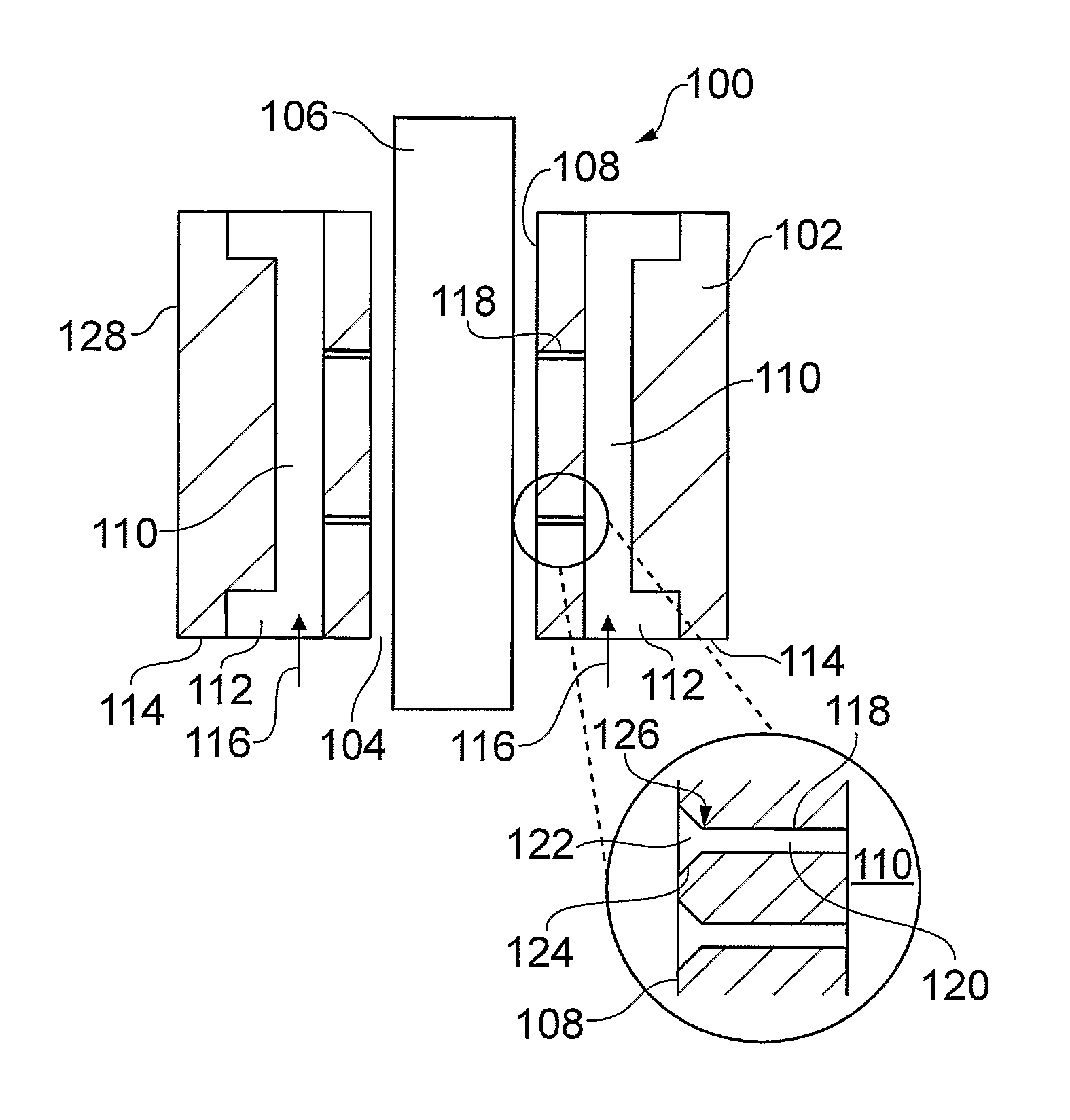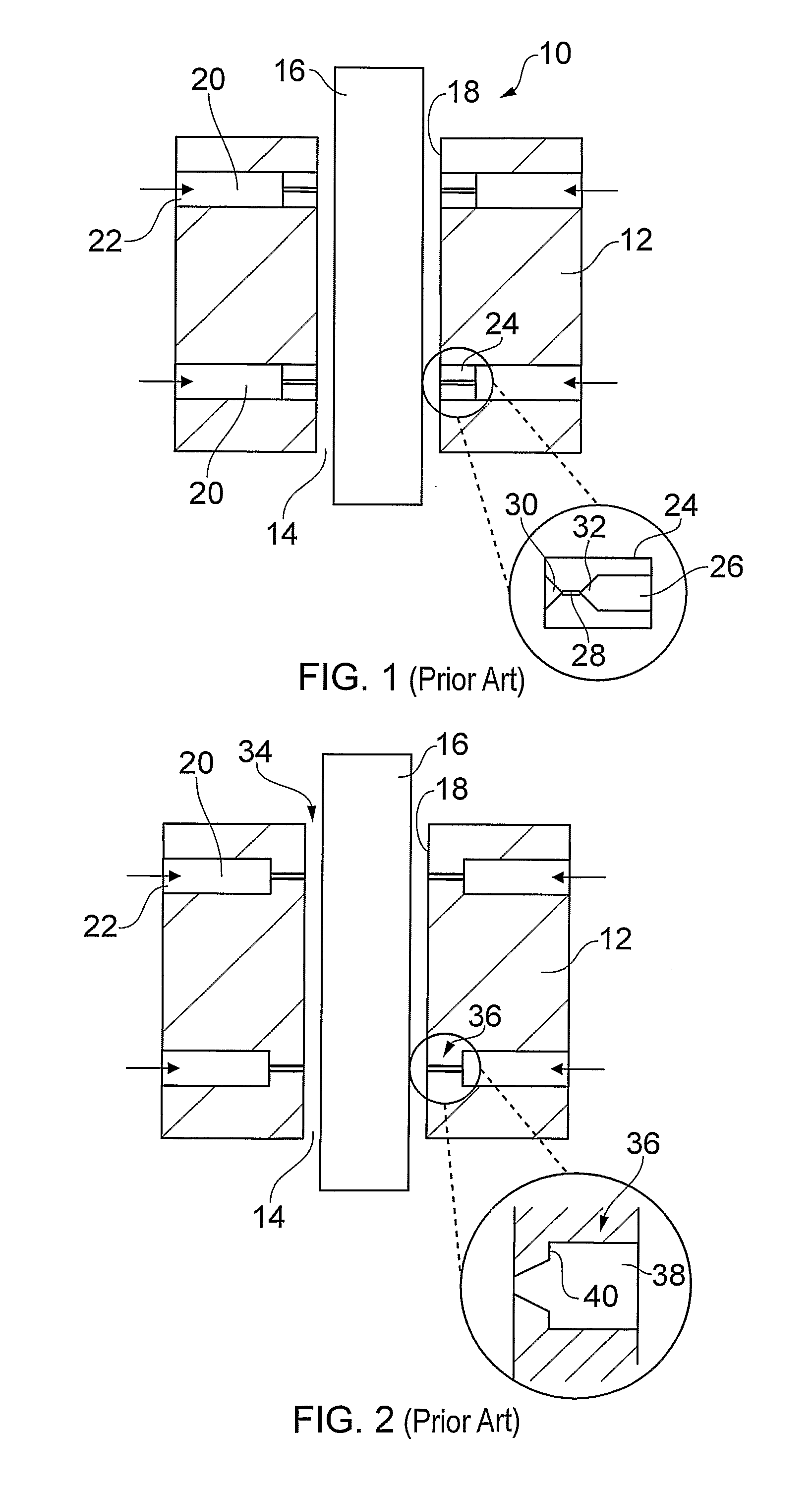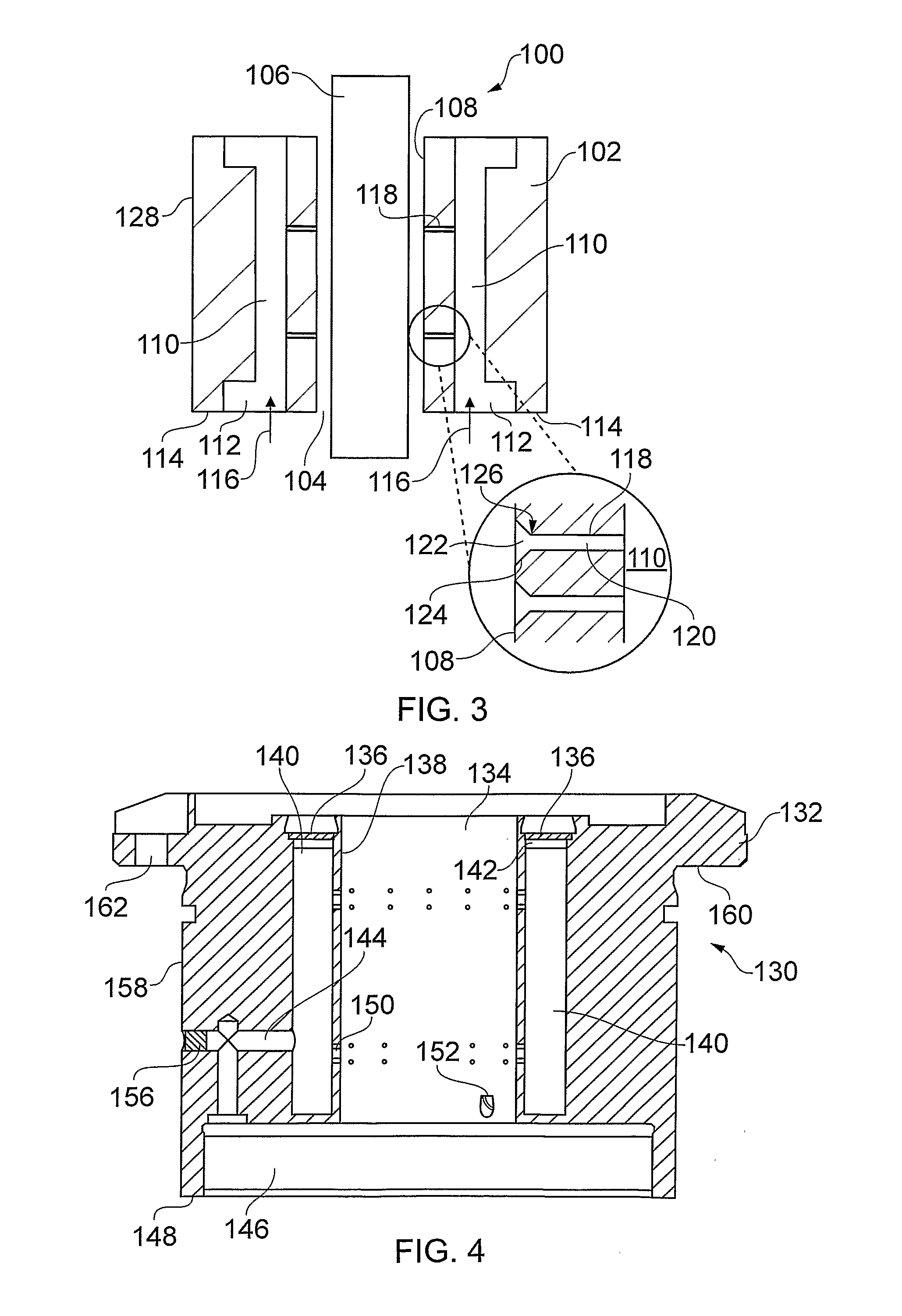Gas bearing and method of manufacturing the same
a technology of gas bearings and bearings, which is applied in the direction of bearings, shafts, laser beam welding apparatuses, etc., can solve the problem of needing a very small jet diameter
- Summary
- Abstract
- Description
- Claims
- Application Information
AI Technical Summary
Benefits of technology
Problems solved by technology
Method used
Image
Examples
Embodiment Construction
; FURTHER OPTIONS AND PREFERENCES
[0042]FIG. 3 shows a schematic cross-section of a journal gas bearing 100 that is an embodiment of the invention. The gas bearing 100 comprises a bearing housing 102 having a shaft bore 104 formed (e.g. mechanically drilled) through it. A shaft 106 mates with the bearing housing 102 by being received along its axis in the shaft bore 104. A bearing surface 108, which defines the shaft bore 104, has a diameter greater than the diameter of the shaft 106 so that an annular gap exists between the two.
[0043]The bearing housing 102 contains a plurality of axially extending chambers 110. As shown in FIG. 3, the chambers 110 each have an opening 112 formed at an axial end 114 of the bearing housing 102. The openings 112 may be arranged to receive pressurised gas from a gas supply as indicated by arrows 116. The axial extending chambers 110 thus comprise a pressurisable space contained in the bearing housing 102.
[0044]A plurality of laser drilled capillaries 1...
PUM
| Property | Measurement | Unit |
|---|---|---|
| Pressure | aaaaa | aaaaa |
| Circumference | aaaaa | aaaaa |
Abstract
Description
Claims
Application Information
 Login to View More
Login to View More - R&D
- Intellectual Property
- Life Sciences
- Materials
- Tech Scout
- Unparalleled Data Quality
- Higher Quality Content
- 60% Fewer Hallucinations
Browse by: Latest US Patents, China's latest patents, Technical Efficacy Thesaurus, Application Domain, Technology Topic, Popular Technical Reports.
© 2025 PatSnap. All rights reserved.Legal|Privacy policy|Modern Slavery Act Transparency Statement|Sitemap|About US| Contact US: help@patsnap.com



